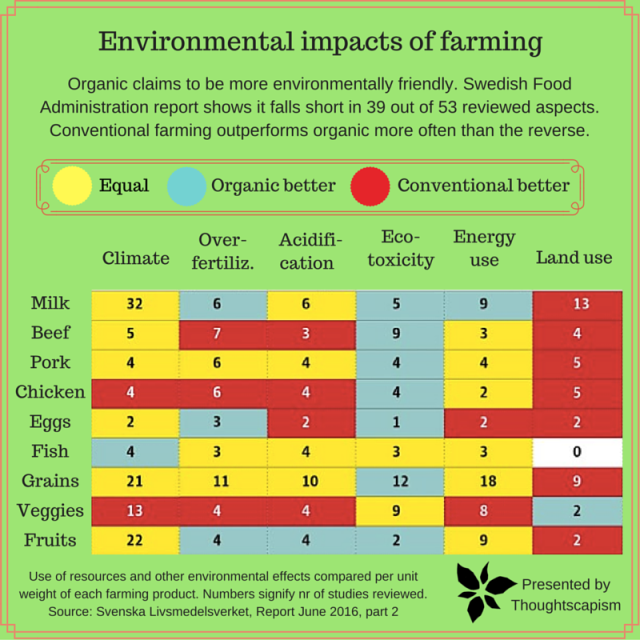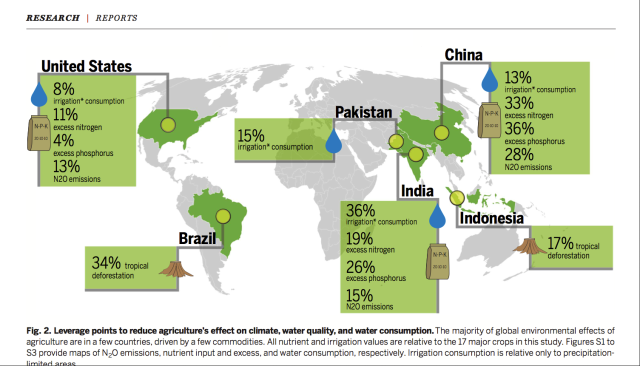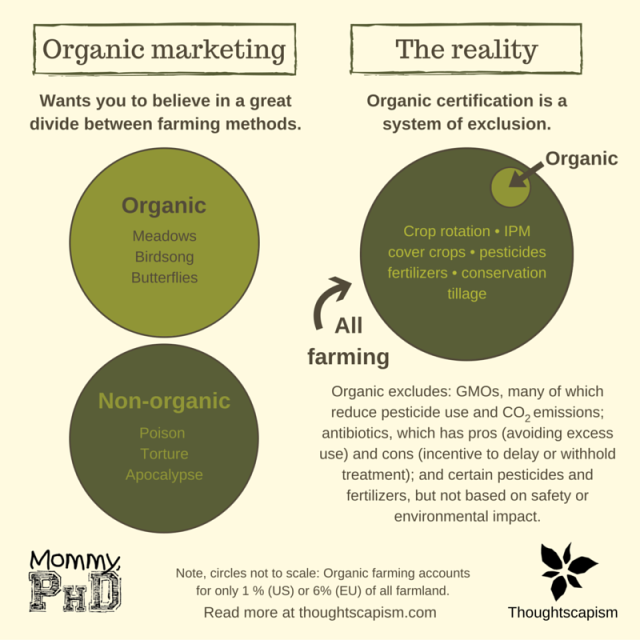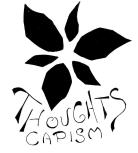The Swedish Food Agency (Svenska Livsmedelsverket SLV) recently published a report on a many-faceted breakdown of environmental effects in farming per one kilogram of farming product. This report was also discussed in an opinion piece in the Sweden’s largest newspaper, Dagens Nyheter (under the title “Organic farming has never been better for the environment”).
In this SLV’s report the researchers looked at environmental impacts separated into the subtopics of climate, over-fertilization, acidification, eco-toxicity, energy use, and land use. They determined there to be a difference between the two when a study would find more than 10 % variation in the two farming systems’ respective impacts, and when two thirds of the studies considered would be in agreement over the effect. The number inside each cell signifies the number of studies considered. They compared these effects per one kilogram product for nine categories of food product: milk, beef, pork, chicken, eggs, fish and seafood, vegetables, and fruits and berries. (Note, category fish and seafood shortened to ‘fish’ and category fruit and berries to ‘fruit’for space reasons in the version I translated and created into the infographic you see below. The table with its numbers and colours was provided as is in the report).

The table can be found in the DN article or originally on page 41 in the SLV’s report
What conclusions can be drawn from this summary?
Neither conventional or organic is clearly environmentally superior. The claim that one of these two systems would be worth special subsidies, higher cost to consumer, or a better reputation, is not well founded – if such a difference is hinted at, the benefit seems to reside slightly on the side of conventional farming.
Organic is on top in fourteen aspects, half of them in the area of ecotoxicity. This does not address the question whether ecotoxicity is a great risk in contemporary agriculture, or greater or lesser one than any one of the other aspects. It is worthwhile to considering that pesticides have become dramatically safer over the past 50 years. Some perspective on herbicides is given in the piece: Herbicides: How harmful are they? They write:
Although there have been pesticides that were toxic and dangerous to handle, most of these products are no longer used and have been replaced by newer chemistry. Pesticides now must go through rigorous testing by the U.S. Environmental Protection Agency (EPA) before they can be sold. This has led to many herbicides that possess little or no mammalian toxicity and are less harmful than many everyday household products (Table 1). Surprisingly, household chemicals that many of us store under the kitchen sink pose more risk to the handler than herbicides.
Another good overview comes from Steve Savage over at Applied Mythology: Pesticides – Probably Less Scary Than You Imagine:
All the registered pesticides are also extensively studied in terms of their effects on “non-target” organisms and their environmental fate. The rules for how any given pesticide can be used (the label requirements) factor in worker and environmental risk. Once again, the sort of issues that were common in the 1960s are not at all reflective of the modern situation.
This does not mean that pesticides should not be carefully studied and monitored to make sure we apply them in a way that has minimal adverse effect on organisms which fall outside their scope (managing pests and weeds). I have written more about the research done on bees and neonicotinoid here, for instance.
Meanwhile, conventional farming (representing about 94 % of all farming in Europe) ends on top on eighteen aspects in this table summary – that is only four ‘winning’ aspects more than organic. Once more, neither these columns nor rows are a one plus one kind of metric, as there are local and global differences to importances of the different environmental impacts, differences to how large areas the farming of each product category represents, and differences too to how pronounced and reliable each of the measured differences between the systems are. Bearing this in mind, the conventional’s clearest strong side, outperforming organic in seven out of eight categories, is land use. It may not be surprising that these are the clearest signals: whereas organic excludes pesticides and fertilizers of a certain type (ones that are considered too man-made), conventional makes careful use of them, and partly thanks to just that, ends up making more optimal use of its area, producing more product on less land.
Ecotoxicity vs land use – which is a larger problem?
It is not a simple task to try to assign relative weights to environmental impacts, but it is worth the effort to try to look for evaluations of this topic in the scientific literature. Marc Brazeau has written an insightful piece on this topic: Focus On Pestidices Is a Distraction From Major Eco Impacts, where he reports on a research paper looking at the largest environmental areas of concern, titled Leverage points for improving global food security and the environment, in the journal Science. He makes some important observations on the relatively low impact of pesticides vs several other factors in farming:
The environmental impacts highlighted include water use and irrigation; nutrient leaching and eutrophication due to excess nitrogen and phosphorus; land use, especially tropical deforestation; and greenhouse gases, especially N2O but also carbon and methane. If you look at the research on the environmental impacts of food production by researchers like geophysicist Gidon Eshel of Bard College (Michael Pollan’s go-to source on these matters) you will find a similar set of concerns and the same absence of pesticides as an environmental concern.

This figure was featured in Marc Brazeau’s piece, and it is originally from the article Leverage points for improving global food security and the environment, behind paywall over at Science
He goes on to point out that pesticides actually help us address some of those other important issues. With appropriate use of pesticides, less resources (such as fertilizers, land, irrigation) are wasted on pests and weeds – thus limiting the general effects of farming. Scoring higher on ecotoxicity indeed seems potentially to be a part of the why conventional farming has an environmental edge over organic farming.
The big picture?
If you consider the columns in the table on climate, over-fertilization, acidification, and energy use – which all belong to the areas highlighted by the Science piece as crucial priorities – the only honest conclusion we can draw is: in Sweden, at least, there is no clear superiority among the farming systems. In these four important environmental aspects they are by far more often equal than they are different.
What comes to situations elsewhere, an European meta-analysis of hundred studies finds that over-fertilization, acidification, and land use are the more problematic aspects in organic farming, whereas it tends to have smaller energy requirements than conventional farming. Quote from the conclusion of the meta-analysis Does organic farming reduce environmental impacts?:
…ammonia emissions, nitrogen leaching and nitrous oxide emissions per product unit were higher from organic systems. Organic systems had lower energy requirements, but higher land use, eutrophication potential and acidification potential per product unit.
Land use, on the other hand, also highlighted as very important by the paper in Science on global farming issues, is where conventional farming clearly is the environmental choice. This is where the ‘ecotoxic’ substances would probably have helped avoid using more land.
Let’s sit down at a neat table: correct mistaken ideas
What makes this kind of review important is clear when you consider the common belief propagated by organic marketers: that theirs is the more environmentally friendly way to farm. I used to make the same Natural Assumption. But the environment does not in fact differentiate between a harmful impact from a ‘natural’ source (however that may be defined) and a ‘non-natural’ one.
If the organic label was committed to striving toward documented environmental benefits instead of the idea of some kind of superior naturalness, I would still be the loyal organic customer I used to be. As it is, there is little support in the science or in this SLV report for the claim of organic farming leading the way in the use of environmentally friendlier methods today.

Unfortunately many mistaken ideas about organic farming stem from the misleading tactics of organic marketers. Infographic created together with Alison Bernstein aka Mommy PhD, who came up with the idea behind it. Statistics on European organic farming can be found here, and you can read more about pesticides, antibiotics, GMOs, conservation tillage, and crop rotations in the piece below.
Instead organic lobbying has marketed its idea of superiority to the degree that the Swedish state pays subsidies to support organic farming to the sum of 600 million Krona per year – and half that again in the amount state institutions’ commitment to buying organic, and more still if you consider the cost to ordinary consumers who believe the same idea (figures are according to the Swedish ecologist and Emeritus Professor Torbjörn Fagerström and plant physiologist Jens Sundström in their article in DN). In the same vein, taking things to more of an extreme, a rather worrisome suggestion comes from the Swedish Green Party, where they campaigns for a shift into 100 % organic farming. It makes me wonder if farming methods have become all marketing and politics? Where does science fit in all of this?
What we really need now is an evidence-based environmental standard that we can encourage all farmers to aspire to. Organic could turn a new leaf and become that positive influence. My understanding is that it has inspired the farming-world wide adoption of several good methods in the past, such as Integrated Pest Management and use of cover crops – and it could do so again. It could help us save the environment, including the land that can be spared from being converted into fields.
This Swedish report looks at conventional farming without the environmental benefits of biotech
It is worth underlining that this report focuses on Swedish farming or studies in comparable settings, or places where a lot of their food imports come from. There is almost none of the documented positive climate effect or decreased pesticide use effect from the use of biotech varieties in these results, as adoption of biotech crops has been painfully slow in Europe.
With biotechnology, it has been documented that conventional farming becomes more environmentally friendly, saving more resources, such as reducing pesticide-use, and allowing for the wider adoption of no-till, limiting erosion and run-off. Studies on the key environmental impacts that crop biotechnology has had on global agriculture in 2012 and 2013 point out following advances:
The adoption of GM insect resistant and herbicide tolerant technology has reduced pesticide spraying by 553 million kg (-8.6%) and, as a result, decreased the environmental impact associated with herbicide and insecticide use on these crops (as measured by the indicator the Environmental Impact Quotient (EIQ)) by19.1%. The technology has also facilitated important cuts in fuel use and tillage changes, resulting in a significant reduction in the release of greenhouse gas emissions from the GM cropping area. In 2013, this was equivalent to removing 12.4 million cars from the roads.

From the piece: GMOs and the Environment
Another thing worth noting is that Sweden also has some of the most restrictive pesticide rules for organic. This might also factor into having organic rate better for ‘ecotoxicity’.
It’s good to keep in mind that many pesticides are still allowed even in Swedish organic, the following list comes from the most restricted organic brand, KRAV: azadiracthin, pyrethrines, lecithins, hydrolysed proteins, bee wax, quassia, micro-organisms, spinosad, pheromones, Iron(III)phosphate, Kaliumsalt, calcium polysulphide, paraffine oil, kvartssand, sulphur, calcium hydroxide, kalium carbonate, aluminium silicate, and laminarin. Many consumers are in fact unaware of any pesticide use being allowed in organic farming, partly thanks to their marketing which spreads the misleading idea (like they did in Coop’s popular organic ad which has now been sued for misleading tactics). But organic farmers, like any farmers, do have a great need for pesticides, because they all direly need to have a way to handle pests. Otherwise there would in many cases be no crop to speak of. In the wise words of the weed ecologist Andrew Kniss: Everything in agriculture is a trade-off.
A similar detail analysis, such as this Swedish one, would be very interesting to see for instance for US, where farmers enjoy the benefits of biotech-induced drop in pesticide use and reduction in carbon emissions.
The bottom line for me is this: no matter the label, I want to buy food that uses methods that best help reduce environmental impacts, particularly the ones that pose most urgent threats to our natural world today. It is very important for me that we focus on environmental issues in farming, and that we do so based on accurate scientific information, not misleading marketing ideas.
UPDATE. On a strikingly similar note, a meta-analysis was published about a week ago, likewise making comparisons of environmental impacts: Comparative analysis of environmental impacts of agricultural production systems, agricultural input efficiency, and food choice. A summary of their results in the graph below:

In the paper, they say:
Our analyses show that dietary shifts towards low-impact foods and increases in agricultural input use efficiency would offer larger environmental benefits than would switches from conventional agricultural systems to alternatives such as organic agriculture or grass-fed beef.
They also elaborate:
Adoption of low-meat and no-meat diets in nations with excess meat consumption (Springmann et al 2016), sustainable increases in crop yields (Foley et al2011, Mueller et al 2012), and adoption of low-impact and otherwise more efficient agricultural systems (Robertson and Vitousek 2009), would offer large environmental benefits. In addition, over 30% of food production is wasted; reducing food waste would offer environmental benefits without requiring shifts in production practices or diets (Foley et al 2011).
There are many important things we can and should do to improve the future of agriculture, but a great many of them necessitate that we steer away from the thinking of demanding an increase in the number of farms and farmers working under organic restrictions.
If you would like to read more, I have written on this topic many times, for instance here: On Farming, Animals, and the Environment, Myth: UN Calls For Small-scale Organic Farming, or other pieces under the categories: The Environment and Farming and GMOs.

If you would like to ask a question or have a discussion in the comments below, you are very welcome, but please take note of my Commenting policy. In a nutshell:
- Be respectful.
- Back up your claims with evidence.


It should also be pointed out that the increased land use of Organic is the increased use of the one input we don’t make more of.
LikeLiked by 1 person
In French here:
http://seppi.over-blog.com/2016/07/agriculture-conventionnelle-c-agriculture-biologique-laquelle-a-l-impact-le-plus-faible-sur-l-environnement.html
LikeLiked by 1 person
Pingback: Biologische en conventioneel even goed (of slecht) voor het milieu
Pingback: Picking Produce: Organic or Conventional- Does it matter? - Quest for Health KC
Thank you for another thoughtful and informative article!
Although I’m not a farmer or scientist, I wonder if soil erosion deserves more consideration than it gets in the Swedish report and in your article as a whole. Some researchers, such as David R. Montgomery (author of Dirt: The Erosion of Civilizations), argue that soil erosion is “one of the key long-term issues that human society is going to have wrestle with in the next half century,” based on research including a 2006 Cornell study which found that soil in the US “is being swept and washed away 10 to 40 times faster than it is being replenished,” while “30 percent of the world’s arable land has become unproductive” due to erosion over the last 40 years. The study’s author, Cornell professor of ecology David Pimentel, calls soil erosion “second only to population growth as the biggest environmental problem the world faces.”
Soil erosion, like most of the subtopics considered by the Swedish report, seems to transcend the organic/conventional divide. For example, Montgomery (in the first article below) purports to debunk myths about the sustainability of both organic and conventional farming, to the extent they ignore soil conservation and regeneration. And while some proponents of soil conservation are arguably overly sympathetic to organic agriculture — such as the Environmental Working Group, Debbie Barker (and the organization she directs, the Center for Food Safety), and Michael Pollan — and other proponents (e.g. The Land Institute) are sharply critical of “the current agricultural paradigm”, I haven’t yet found a rebuttal to their claims on this topic or the base of research which appears to support it.
Have I not looked far enough? Do you agree that this is an important and relevant issue, one which is “based on accurate scientific information, not misleading marketing ideas”?
References: [omitting some links at first to bypass spam filter]
“Healthy soil is the real key to feeding the world” by David R. Montgomery, The Conversation
https://theconversation.com/healthy-soil-is-the-real-key-to-feeding-the-world-75364
“America is running out of soil” by Matt Hansen, The Week
“‘Slow, insidious’ soil erosion threatens human health and welfare as well as the environment, Cornell study asserts”
“Soil Erosion: A Food and Environmental Threat” by David Pimentel
“Losing Ground” report, Environmental Working Group
“A secret weapon to fight climate change: dirt” by Debbie Barker and Michael Pollan
LikeLike
Great article. Have you worked on that topic recently? I would like very much to have it translated to Portuguese to achieve scientists and ordinary people in Brazil. I’m a researcher on biological nitrogen fixation and would be happy to collaborate with you in articles on that topic if you are interested.
LikeLike